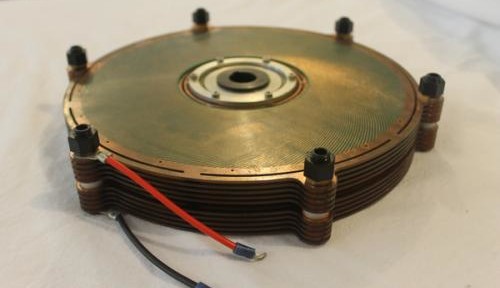An Electrostatic Motor
on

Conventional electric motors rely on the forces of electro magnetism to provide motion. An item in the UW-Madison news letter announced that a motor is under development at the headquarters of C-Motive Technologies which uses the force of electric fields.
According to Dan Ludois, an assistant professor of electrical and computer engineering at the UW and co-founder of C-Motive Technologies “We have proven the concept of a new motor that uses electric fields rather than magnetic fields to transform electricity into a rotary force, the distinction may sound minor, but it could solve a number of practical problems while saving money”
As the news item acknowledges the concept is not entirely new: Benjamin Franklin and others described and built motors based on electrostatic forces back in the 18th and 19th centuries, but none achieved practical operation. Since the widespread adoption of electric motors a century ago, magnetism has been the only practical source of rotation. Magnetism is easier to exploit than electrostatic fields due to the properties of naturally occurring materials and simple engineering techniques. However, new advances in materials, mechanical engineering and advanced manufacturing mean that electrostatic motors may now be a practical alternative.
By saving weight and materials, and boosting efficiency, the new design should give the company a bottom-line advantage. The new design avoids the use of precious “rare earth” metals and substitutes aluminum for the more expensive copper found in magnet windings of conventional motors and generators.


Discussion (0 comments)